Full text
PDF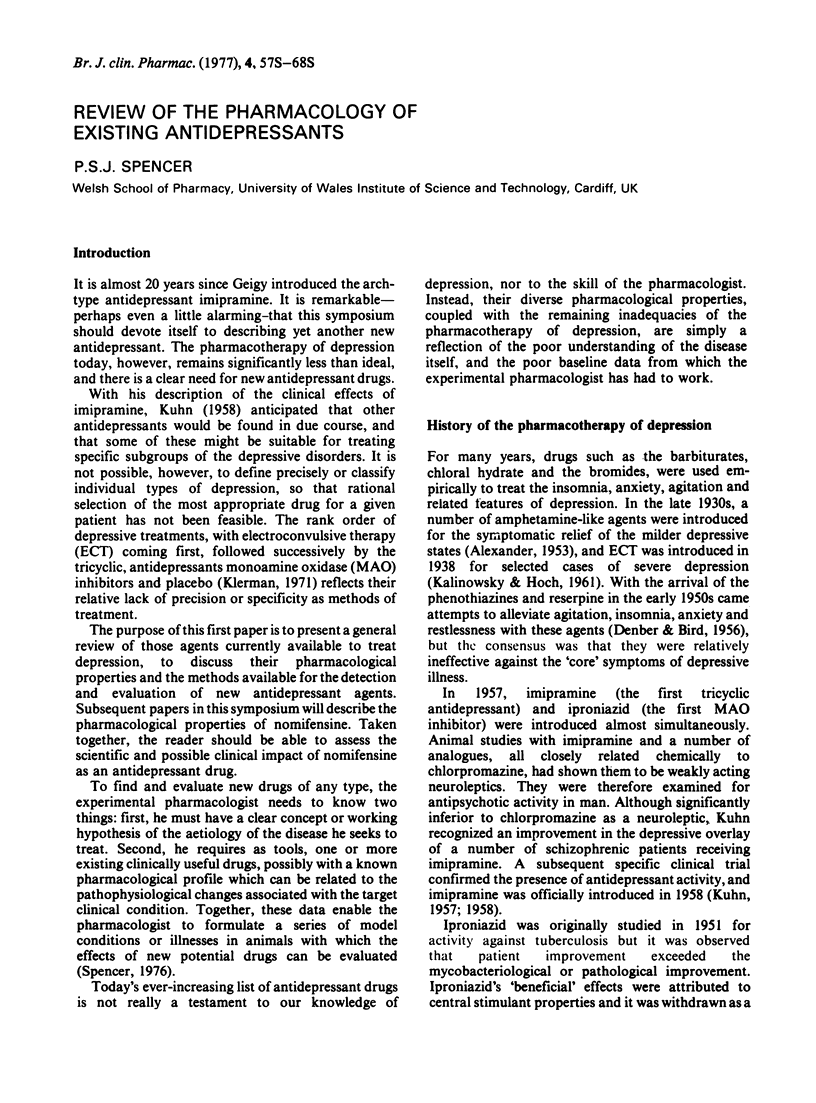

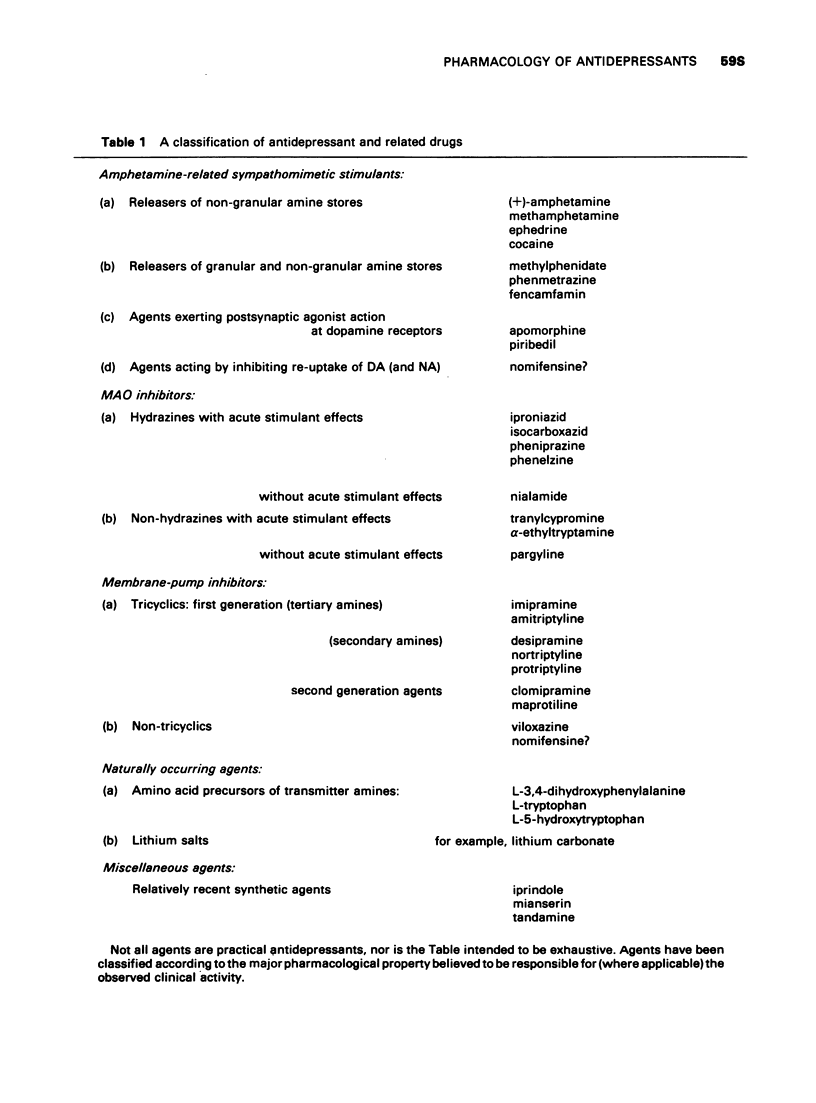
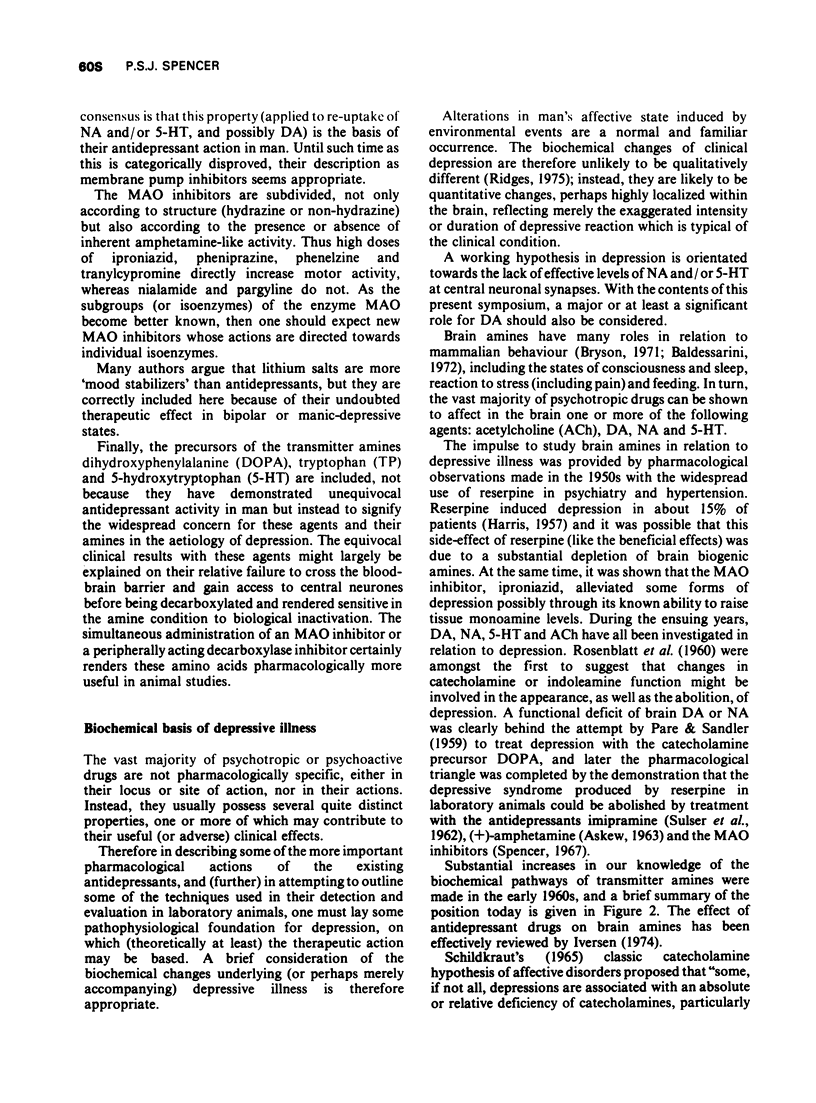
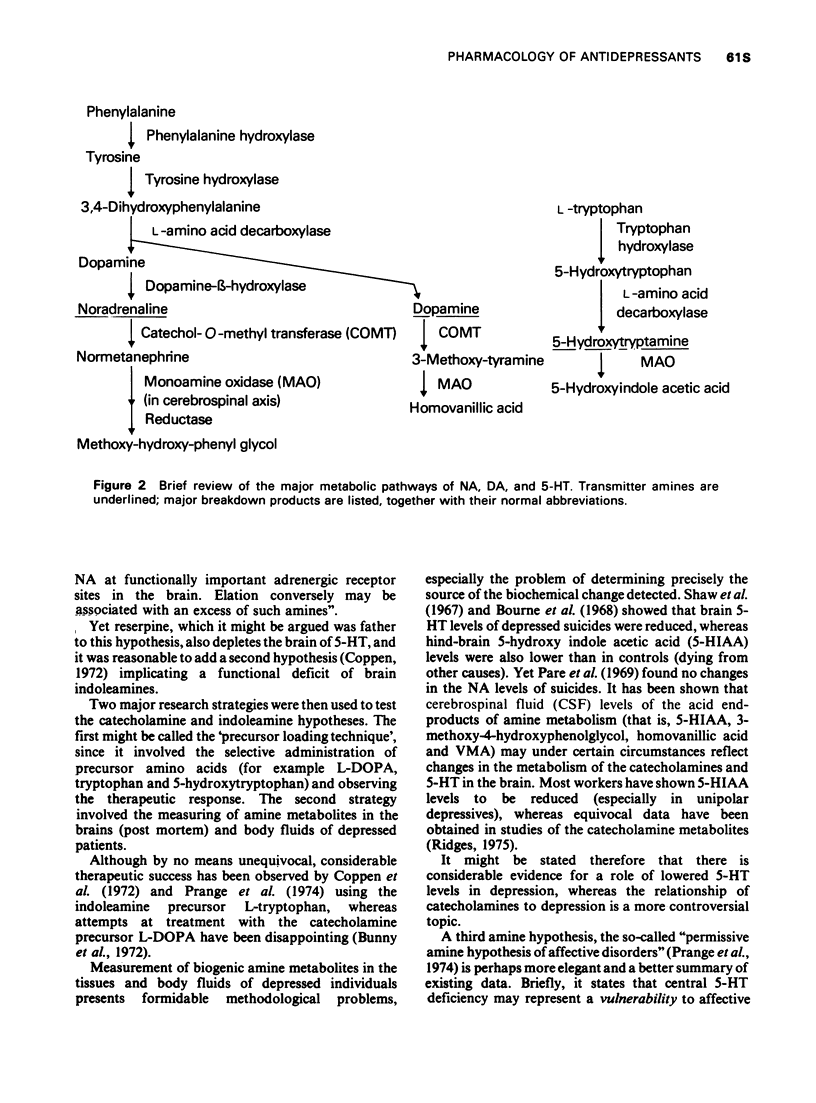
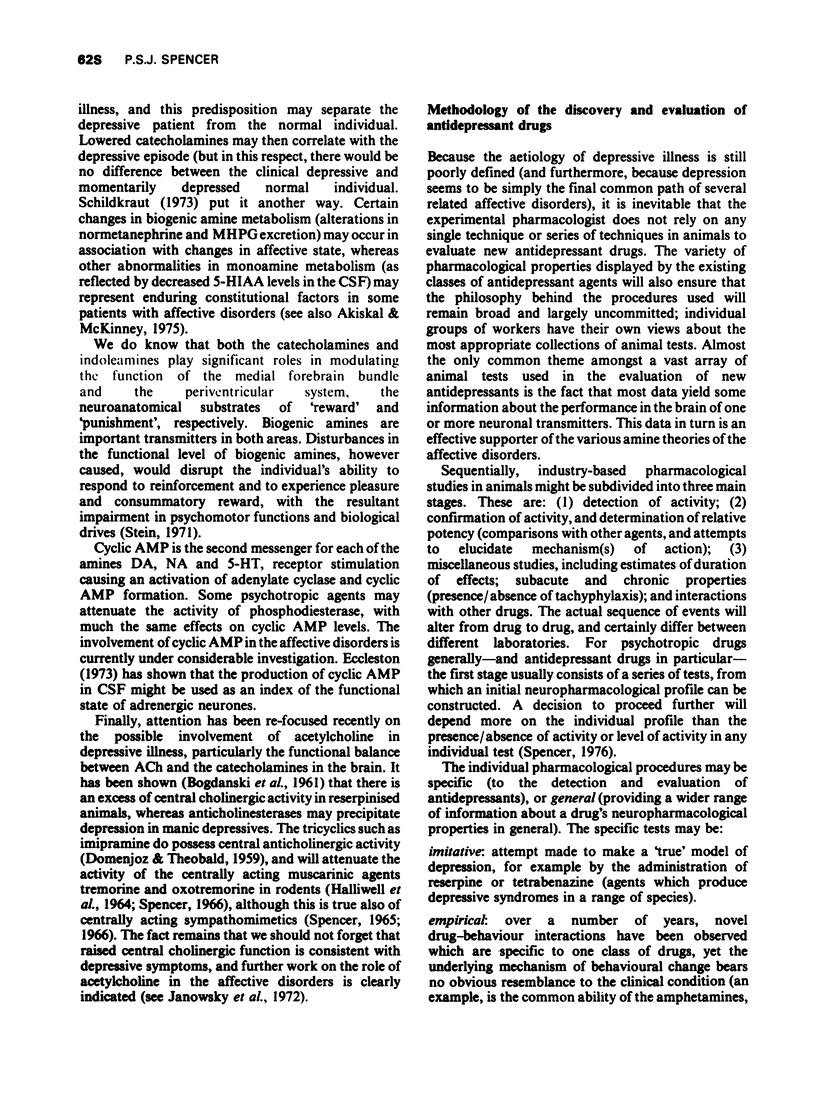
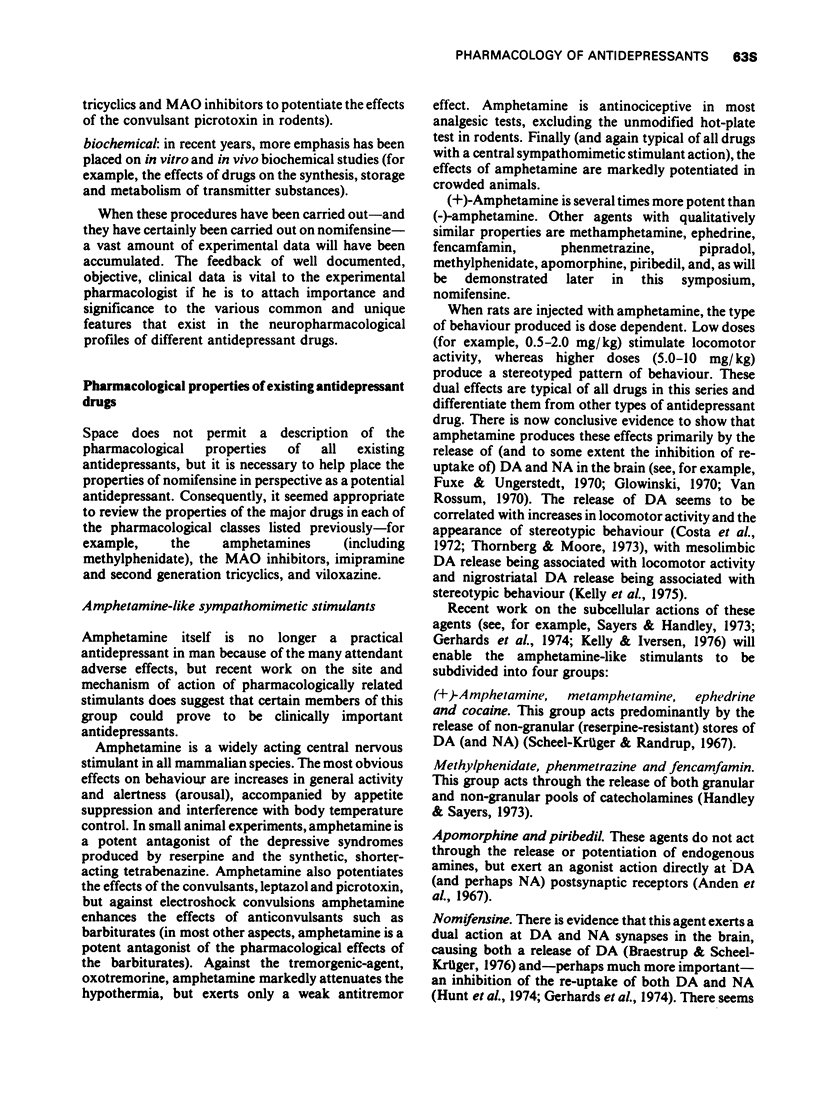
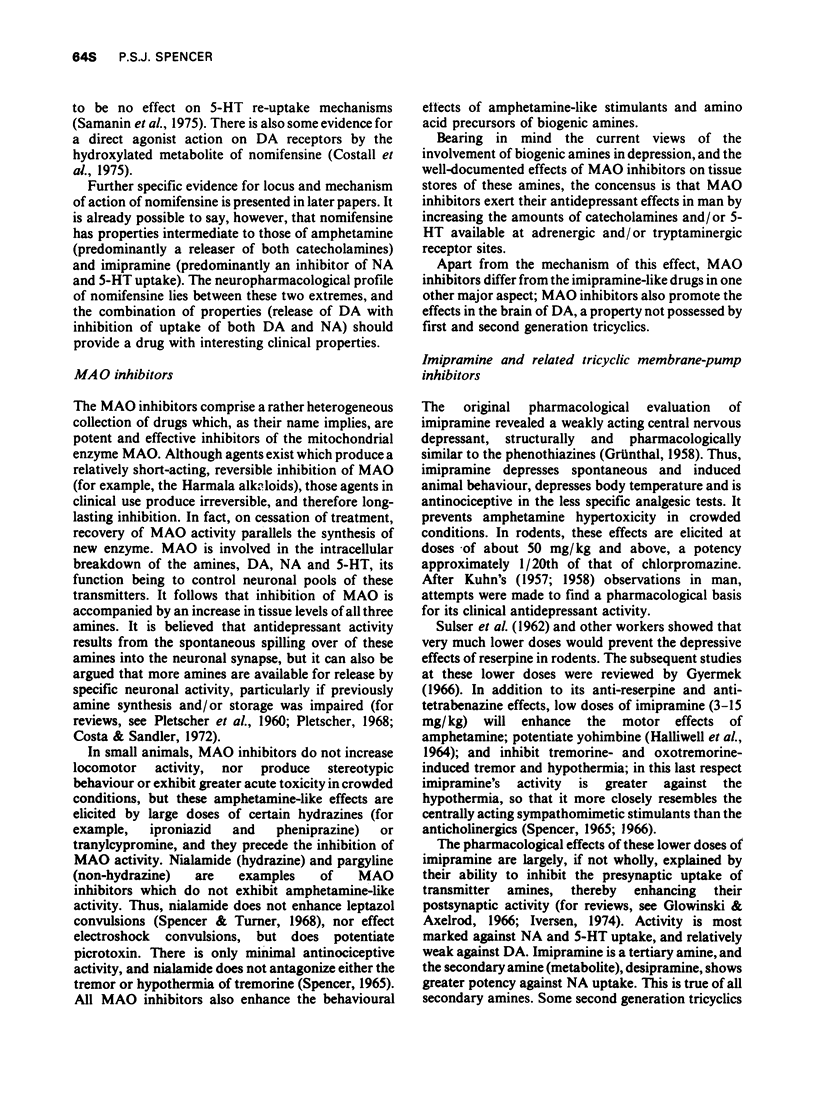
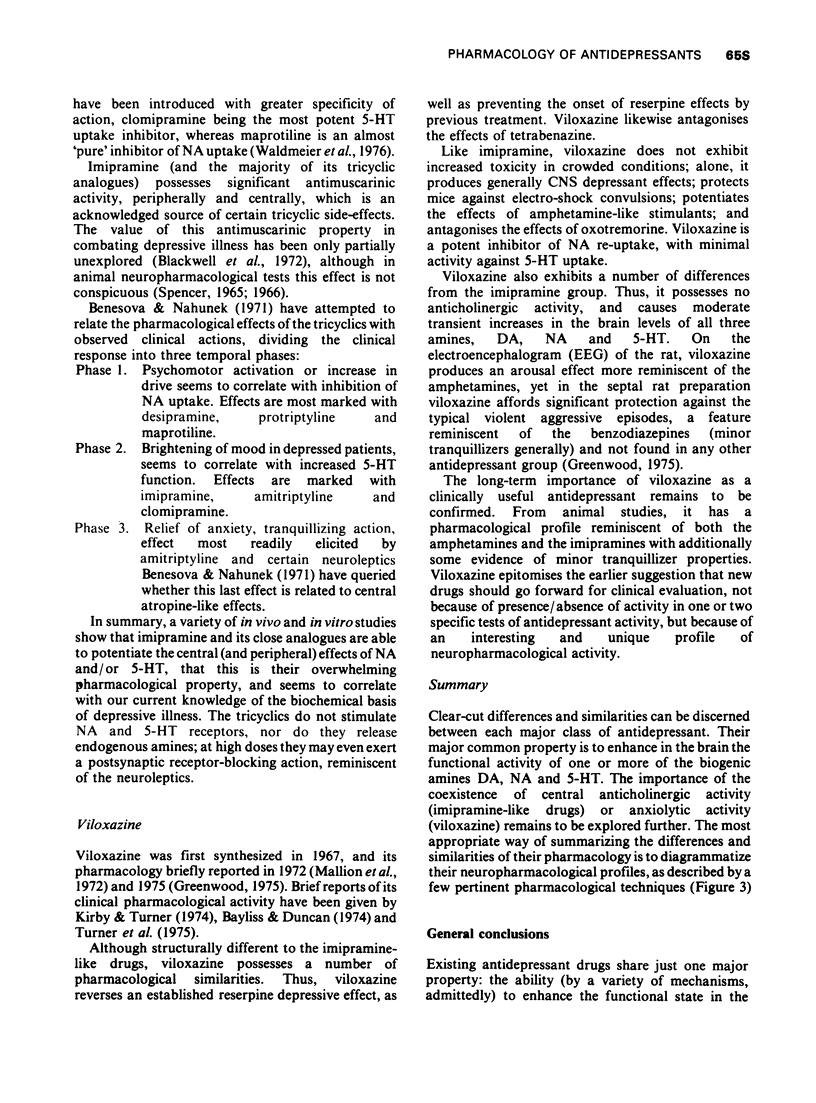

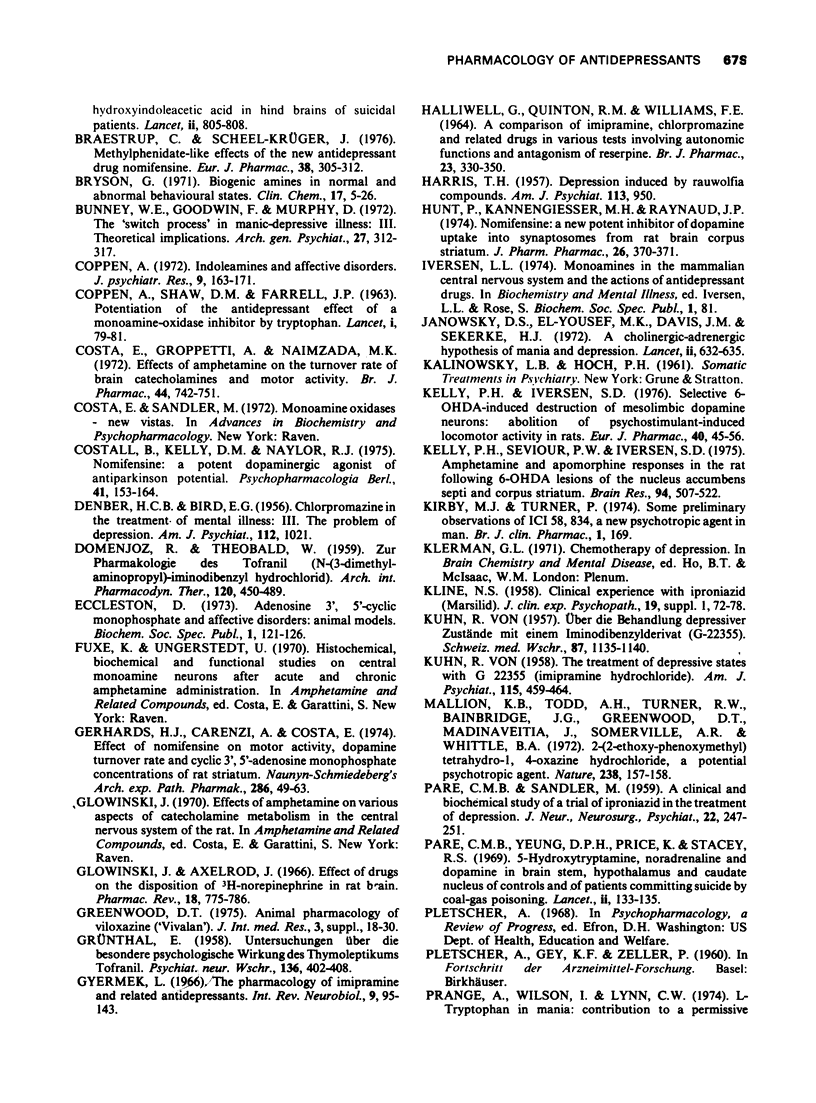
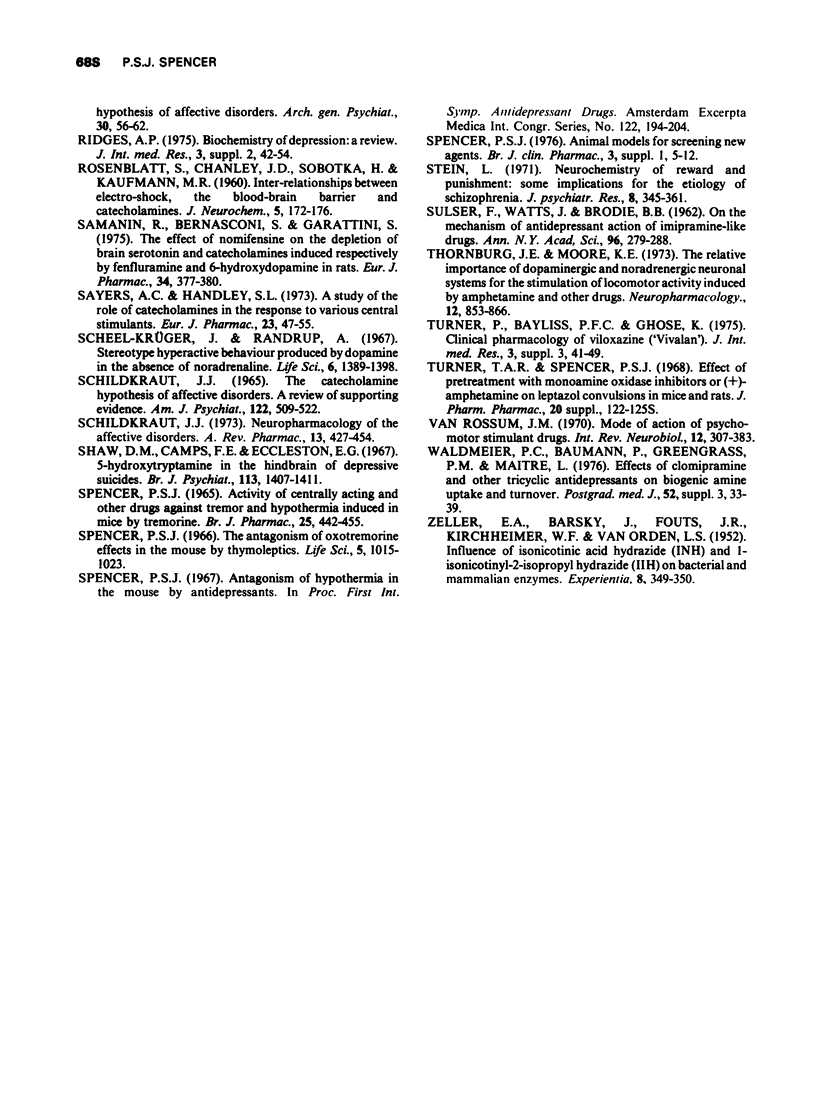
Selected References
These references are in PubMed. This may not be the complete list of references from this article.
- ASKEW B. M. A SIMPLE SCREENING PROCEDURE FOR IMIPRAMINE-LIKE ANTIDEPRESSANT AGENTS. Life Sci. 1963 Oct;10:725–730. doi: 10.1016/0024-3205(63)90076-6. [DOI] [PubMed] [Google Scholar]
- Akiskal H. S., McKinney W. T., Jr Overview of recent research in depression. Integration of ten conceptual models into a comprehensive clinical frame. Arch Gen Psychiatry. 1975 Mar;32(3):285–305. doi: 10.1001/archpsyc.1975.01760210019001. [DOI] [PubMed] [Google Scholar]
- Andén N. E., Rubenson A., Fuxe K., Hökfelt T. Evidence for dopamine receptor stimulation by apomorphine. J Pharm Pharmacol. 1967 Sep;19(9):627–629. doi: 10.1111/j.2042-7158.1967.tb09604.x. [DOI] [PubMed] [Google Scholar]
- Baldessarini R. J. Biogenic amines and behavior. Annu Rev Med. 1972;23:343–354. doi: 10.1146/annurev.me.23.020172.002015. [DOI] [PubMed] [Google Scholar]
- Benesová O., Náhunek K. Correlation between the experimental data from animal studies and therapetical effects of antidepressant drugs. Psychopharmacologia. 1971;20(4):337–347. doi: 10.1007/BF00403565. [DOI] [PubMed] [Google Scholar]
- Blackwell B., Lipkin J. O., Meyer J. H., Kuzma R., Boulter W. V. Dose responses and relationships between anticholinergic activity and mood with tricyclic antidepressants. Psychopharmacologia. 1972;25(3):205–217. doi: 10.1007/BF00422502. [DOI] [PubMed] [Google Scholar]
- Bourne H. R., Bunney W. E., Jr, Colburn R. W., Davis J. M., Davis J. N., Shaw D. M., Coppen A. J. Noradrenaline, 5-hydroxytryptamine, and 5-hydroxyindoleacetic acid in hindbrains of suicidal patients. Lancet. 1968 Oct 12;2(7572):805–808. doi: 10.1016/s0140-6736(68)92459-8. [DOI] [PubMed] [Google Scholar]
- Braestrup C., Scheel-Krüger J. Methylphenidate-like effects of the new antidepressant drug nomifensine (HOE 984). Eur J Pharmacol. 1976 Aug;38(2):305–312. doi: 10.1016/0014-2999(76)90333-2. [DOI] [PubMed] [Google Scholar]
- Bryson G. Biogenic amines in normal and abnormal behavioral states. Clin Chem. 1971 Jan;17(1):5–26. [PubMed] [Google Scholar]
- Bunney W. E., Jr, Goodwin F. K., Murphy D. L. The "switch process" in manic-depressive illness. 3. Theoretical implications. Arch Gen Psychiatry. 1972 Sep;27(3):312–317. doi: 10.1001/archpsyc.1972.01750270022003. [DOI] [PubMed] [Google Scholar]
- COPPEN A., SHAW D. M., FARRELL J. P. Potentiation of the antidepressive effect of a monoamine-oxidase inhibitor by tryptophan. Lancet. 1963 Jan 12;1(7272):79–81. doi: 10.1016/s0140-6736(63)91084-5. [DOI] [PubMed] [Google Scholar]
- Coppen A. Indoleamines and affective disorders. J Psychiatr Res. 1972 Sep;9(3):163–171. doi: 10.1016/0022-3956(72)90018-0. [DOI] [PubMed] [Google Scholar]
- Costa E., Groppetti A., Naimzada M. K. Effects of amphetamine on the turnover rate of brain catecholamines and motor activity. Br J Pharmacol. 1972 Apr;44(4):742–751. doi: 10.1111/j.1476-5381.1972.tb07312.x. [DOI] [PMC free article] [PubMed] [Google Scholar]
- Costall B., Kelly D. M., Naylor R. J. Nomifensine: a potent dopaminergic agonist of antiparkinson potential. Psychopharmacologia. 1975;41(2):153–164. doi: 10.1007/BF00421073. [DOI] [PubMed] [Google Scholar]
- DENBER H. C., BIRD E. G. Chlorpromazine in the treatment of mental illness. III. The problem of depression. Am J Psychiatry. 1956 Jun;112(12):1021–1021. doi: 10.1176/ajp.112.12.1021. [DOI] [PubMed] [Google Scholar]
- DOMENJOZ R., THEOBALD W. [On the pharmacology of tofranil (N-(3-dimethylaminopropyl)-iminodibenzyl hydrochloride]. Arch Int Pharmacodyn Ther. 1959 Jul 1;120:450–489. [PubMed] [Google Scholar]
- Gerhards H. J., Carenzi A., Costa E. Effect of nomifensine on motor activity, dopamine turnover rate and cyclic 3',5;-adenosine monophosphate concentrations of rat striatum. Naunyn Schmiedebergs Arch Pharmacol. 1974;286(1):49–63. doi: 10.1007/BF00499104. [DOI] [PubMed] [Google Scholar]
- Glowinski J., Axelrod J. Effects of drugs on the disposition of H-3-norepinephrine in the rat brain. Pharmacol Rev. 1966 Mar;18(1):775–785. [PubMed] [Google Scholar]
- HALLIWELL G., QUINTON R. M., WILLIAMS F. E. A COMPARISON OF IMIPRAMINE, CHLORPROMAZINE AND RELATED DRUGS IN VARIOUS TESTS INVOLVING AUTONOMIC FUNCTIONS AND ANTAGONISM OF RESERPINE. Br J Pharmacol Chemother. 1964 Oct;23:330–350. doi: 10.1111/j.1476-5381.1964.tb01590.x. [DOI] [PMC free article] [PubMed] [Google Scholar]
- HARRIS T. H. Depression induced by Rauwolfia compounds. Am J Psychiatry. 1957 Apr;113(10):950–950. doi: 10.1176/ajp.113.10.950. [DOI] [PubMed] [Google Scholar]
- Hunt P., Kannengiesser M., Raynaud J. Nomifensine: a new potent inhibitor of dopamine uptake into synaptosomes from rat brain corpus striatum. J Pharm Pharmacol. 1974 May;26(5):370–371. doi: 10.1111/j.2042-7158.1974.tb09294.x. [DOI] [PubMed] [Google Scholar]
- Janowsky D. S., el-Yousef M. K., Davis J. M., Sekerke H. J. A cholinergic-adrenergic hypothesis of mania and depression. Lancet. 1972 Sep 23;2(7778):632–635. doi: 10.1016/s0140-6736(72)93021-8. [DOI] [PubMed] [Google Scholar]
- KUHN R. The treatment of depressive states with G 22355 (imipramine hydrochloride). Am J Psychiatry. 1958 Nov;115(5):459–464. doi: 10.1176/ajp.115.5.459. [DOI] [PubMed] [Google Scholar]
- KUHN R. Uber die Behandlung depressiver Zustände mit einem Iminodibenzylderivat (G 22355). Schweiz Med Wochenschr. 1957 Aug 31;87(35-36):1135–1140. [PubMed] [Google Scholar]
- Kelly P. H., Iversen S. D. Selective 6OHDA-induced destruction of mesolimbic dopamine neurons: abolition of psychostimulant-induced locomotor activity in rats. Eur J Pharmacol. 1976 Nov;40(1):45–56. doi: 10.1016/0014-2999(76)90352-6. [DOI] [PubMed] [Google Scholar]
- Kelly P. H., Seviour P. W., Iversen S. D. Amphetamine and apomorphine responses in the rat following 6-OHDA lesions of the nucleus accumbens septi and corpus striatum. Brain Res. 1975 Sep 5;94(3):507–522. doi: 10.1016/0006-8993(75)90233-4. [DOI] [PubMed] [Google Scholar]
- Mallion K. B., Todd A. H., Turner R. W., Bainbridge J. G., Greenwood D. T., Madinaveitia J., Somerville A. R., Whittle B. A. 2-(2-ethoxyphenoxymethyl)tetrahydro-1,4-oxazine hydrochloride, a potential psychotropic agent. Nature. 1972 Jul 21;238(5360):157–158. doi: 10.1038/238157a0. [DOI] [PubMed] [Google Scholar]
- PARE C. M., SANDLER M. A clinical and biochemical study of a trial of iproniazid in the treatment of depression. J Neurol Neurosurg Psychiatry. 1959 Aug;22:247–251. doi: 10.1136/jnnp.22.3.247. [DOI] [PMC free article] [PubMed] [Google Scholar]
- Pare C. M., Yeung D. P., Price K., Stacey R. S. 5-hydroxytryptamine, noradrenaline, and dopamine in brainstem, hypothalamus, and caudate nucleus of controls and of patients committing suicide by coal-gas poisoning. Lancet. 1969 Jul 19;2(7612):133–135. doi: 10.1016/s0140-6736(69)92442-8. [DOI] [PubMed] [Google Scholar]
- Prange A. J., Jr, Wilson I. C., Lynn C. W., Alltop L. B., Stikeleather R. A. L-tryptophan in mania. Contribution to a permissive hypothesis of affective disorders. Arch Gen Psychiatry. 1974 Jan;30(1):56–62. doi: 10.1001/archpsyc.1974.01760070040006. [DOI] [PubMed] [Google Scholar]
- ROSENBLATT S., CHANLEY J. D., SOBOTKA H., KAUFMAN M. R. Interrelationships between electroshock, the blood-brain barrier, and catecholamines. J Neurochem. 1960 Feb;5:172–176. doi: 10.1111/j.1471-4159.1960.tb13350.x. [DOI] [PubMed] [Google Scholar]
- SULSER F., WATTS J., BRODIE B. B. On the mechanism of antidepressant action of imipraminelike drugs. Ann N Y Acad Sci. 1962 Jan 13;96:279–288. doi: 10.1111/j.1749-6632.1962.tb50122.x. [DOI] [PubMed] [Google Scholar]
- Samanin R., Bernasconi S., Garattini S. The effect of nomifensine on the depletion of brain serotonin and catecholamines induced respectively by fenfluramine and 6-hydroxydopamine in rats. Eur J Pharmacol. 1975 Dec;34(2):377–380. doi: 10.1016/0014-2999(75)90266-6. [DOI] [PubMed] [Google Scholar]
- Sayers A. C., Handley S. L. A study of the role of catecholamines in the response to various central stimulants. Eur J Pharmacol. 1973 Jul;23(1):47–55. doi: 10.1016/0014-2999(73)90243-4. [DOI] [PubMed] [Google Scholar]
- Scheel-Krüger J., Randrup A. Stereotype hyperactive behaviour produced by dopamine in the absence of noradrenaline. Life Sci. 1967 Jul 1;6(13):1389–1398. doi: 10.1016/0024-3205(67)90186-5. [DOI] [PubMed] [Google Scholar]
- Schildkraut J. J. Neuropharmacology of the affective disorders. Annu Rev Pharmacol. 1973;13:427–454. doi: 10.1146/annurev.pa.13.040173.002235. [DOI] [PubMed] [Google Scholar]
- Schildkraut J. J. The catecholamine hypothesis of affective disorders: a review of supporting evidence. Am J Psychiatry. 1965 Nov;122(5):509–522. doi: 10.1176/ajp.122.5.509. [DOI] [PubMed] [Google Scholar]
- Shaw D. M., Camps F. E., Eccleston E. G. 5-Hydroxytryptamine in the hind-brain of depressive suicides. Br J Psychiatry. 1967 Dec;113(505):1407–1411. doi: 10.1192/bjp.113.505.1407. [DOI] [PubMed] [Google Scholar]
- Spencer P. S. Activity of centrally acting and other drugs against tremor and hypothermia induced in mice by tremorine. Br J Pharmacol Chemother. 1965 Oct;25(2):442–455. doi: 10.1111/j.1476-5381.1965.tb02063.x. [DOI] [PMC free article] [PubMed] [Google Scholar]
- Spencer P. S. Animal models for screening new agents. Br J Clin Pharmacol. 1976 Feb;3(1 Suppl 1):5–12. doi: 10.1111/j.1365-2125.1976.tb03706.x. [DOI] [PMC free article] [PubMed] [Google Scholar]
- Spencer P. S. The antagonism of oxotremorine effects in the mouse by thymoleptics. Life Sci. 1966 Jun;5(11):1015–1023. doi: 10.1016/0024-3205(66)90007-5. [DOI] [PubMed] [Google Scholar]
- Stein L. Neurochemistry of reward and punishment: some implications for the etiology of schizophrenia. J Psychiatr Res. 1971 Aug;8(3):345–361. doi: 10.1016/0022-3956(71)90030-6. [DOI] [PubMed] [Google Scholar]
- Thornburg J. E., Moore K. E. The relative importance of dopaminergic and noradrenergic neuronal systems for the stimulation of locomotor activity induced by amphetamine and other drugs. Neuropharmacology. 1973 Sep;12(9):853–866. doi: 10.1016/0028-3908(73)90038-5. [DOI] [PubMed] [Google Scholar]
- Van Rossum J. M. Mode of action of psychomotor stimulant drugs. Int Rev Neurobiol. 1970;12:307–383. doi: 10.1016/s0074-7742(08)60065-3. [DOI] [PubMed] [Google Scholar]
- Waldmeier P. C., Baumann P., Greengrass P. M., Maître L. Effects of clomipramine and other tricyclic antidepressants on biogenic amine uptake and turnover. Postgrad Med J. 1976;52(3 Suppl):33–39. [PubMed] [Google Scholar]


